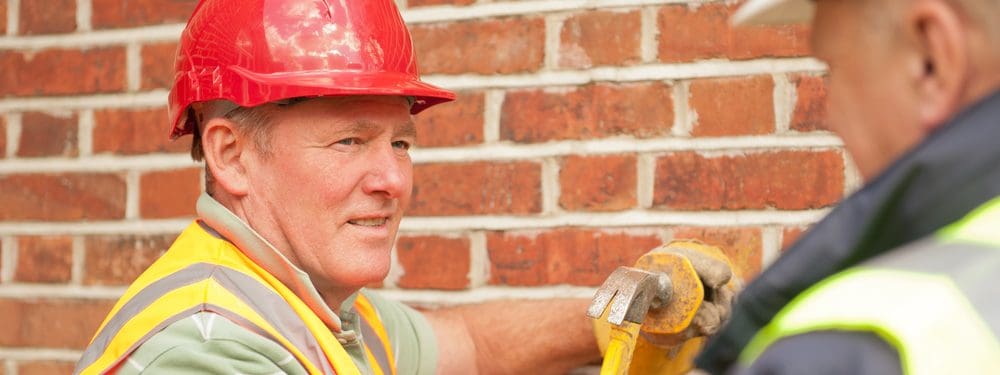
Bringing Building Control into Century 21
Conference Paper for the National Fire Protection Association Australia Conference Brisbane 2018
By Kim Lovegrove RML, FAIB, Consultant and Mediator at Lovegrove & Cotton – Construction and Planning Lawyers
What are the objectives of building control?
What they have always been:-
- Safe buildings
- Buildings that will last absent defects
- Buildings that can be built economically
To achieve these outcomes the building regulatory ecology must have:-
- Strong and best practice building codes; and
- Umbrella acts of parliament that call up the technical codes and provide the overarching administrative regime to deliver best practice building outcomes.
What will best practice Building Acts enable?
Strong building approval and permit regimes which will require:-
- Building permits that permit construction commencement once the building official (i.e. the statutory building control officer more commonly known as building surveyor) is satisfied that the construction design proposal complies with the Act and the Code.
- Mandatory inspection designed to ensure that building officials will be called upon to carry out inspections at key stages. Once satisfied that the building is fit for purpose the official will permit occupation.
- Strong enforcement and intervention powers
- Statutory intervention powers that enable statutory bodies to enter property and effect public protection works immediately to enable the regulator to unilaterally intervene and remove threat to life or limb.
Additionally, there will exist the ability of the regulator to compel constructors to effect immediate rectification work in circumstances where the built product or the work in progress is in breach of the law, or poses a threat to life or limb. These powers need to extend beyond the date upon which the building work has been completed even if the building has been occupied for some years.
The legislation will comprise enforcement apparatus that ensures that there is no appetite for deviation from regulatory compliance. This means penalties that can be deployed with alacrity, and the weighting and the severity of the penalties must be commensurate with magnitude of the transgression.
Registration and Accreditation of Constructors and building practitioners

All key actors will be registered with a government registration body that will determine the qualification and experience criteria for registration eligibility.
There will be annual and compulsory CPD courses.
The qualification will be fit for purpose, not token and will ensure that the regulator will only approve qualifications that guarantee high quality construction outcomes.
There will be mandatory insurance modelled along the lines of the legal fraternity and practitioner registration regimes like Victoria where all building practitioners will be insured by law.
Jurisdictions like NSW that only require the registration of building surveyors and residential builders will not be emulated as a model in light of the failure of this jurisdiction to register all key construction actors.
Compulsory registration will encompass:-
- Residential builders
- Commercial and civil contractors
- Architects
- Engineers
- Building designers
- Building surveyors
- Building inspectors
- Electricians
- Plumbers
The registration body will be endowed with powers to investigate, prosecute and punish recalcitrants.
There will be mandatory and annual auditing regimes modeled along the lines of the law societies that require lawyers who operate trust accounts to be audited twice a year by independent and qualified auditors.
The auditing regime will be user-pays; practitioners will be required to pay government-accredited and independent auditors the fee for the carrying out of the audits.
The auditors will have the power to report professional derelictions of duty to the registration body for investigation, prosecution and censure.
The user-pays regime that underwriters the remuneration of the independent auditors will ensure that the government does not have to underwrite the cost of the regime. Further, it will ensure that there is ‘critical mass’ of enforcement personnel.
Liability Regimes

Ten year liability limitation periods will be promulgated to ensure that once an occupancy permit is issued, plaintiffs will have 10 years to issue legal proceedings for construction defects. 10 years hence the right to issue legal proceedings will by law expire.
Proportionate liability rather than joint and several liability will be the liability apportionment regime to ensure that no defendant can be found judicially implicated for more than their judicially assessed portion of liability.
Proportionate liability will not, however, be legislatively promulgated unless a compulsory ‘broad church’ registration regime is in place. For best practice on point look to Australian jurisdictions Victoria and the Northern territory. The NSW regime where proportionate liability exists absent a ‘broad church’ registration regime should not be emulated.
Building controllers and building surveyors

Although there has been tremendous controversy in Australia associated with the private building surveying profession, this is not an indictment on private building surveying per se. Rather it is an indictment on the deficiencies in building regulation that create an untenable environment within which this profession operates.
The leaky building syndrome that will ultimately cost New Zealanders the better part of 20 billion dollars by the time the legacy issues ‘wash through’ the system, is a profound indictment on the regulatory ecology that acted as an enabler for what could well be the greatest failure in Western building control in the last 30 years. Yet all of this occurred under the local government watch. Likewise, the Grenfell incident occurred under a local government regime. So the writer’s contention is that building regulatory failure is not about a privatised alternative to building approvals, it is about a naive or not-fit-for-purpose building regulatory framework. It can, however, be improved.
Some of the solutions are as follows:-
Building surveyors would be legislatively prevented from sanctioning alternative solution based or non-prescriptive regulation based Building approvals.
Performance or alternative solution based approvals will only be sanctioned by a process of independent government approved peer reviewers.
All building surveyors will be audited annually along the lines of the user-pays system outlined above.
There will be a mandatory requirement for the obtaining of compliance certificates from specialist registered practitioners for the likes of:-
- Components of the building that require specialist qualification such as:-
- Engineering
- Fire engineering
- Electrical and plumbing
There will be a government Gazette fee/floor for the remuneration of private building surveyors below which it will be illegal to charge less; the objective being to prevent ‘fee cannibalisation’.
There will be severe penalties where evidence can be adduced that a building surveyor has compromised his overriding duty to the public
There will be mandatory annual CPD training for building surveyors and a large chunk of the course will concern itself with probity training.
Dispute resolution
Litigation

There will be legislation promulgated to regulate domestic building contracting along the lines of the Home Building Act of NSW.
In the event of a building dispute, mediation will be compulsory at first instance. The mediators will be accredited by the government.
The mediators will be remunerated on a fifty/fifty basis by the disputants.
If the mediation fails, then and only then will the parties be able to issue legal proceedings in specialist construction dispute resolution jurisdictions.
The specialist dispute resolution jurisdictions will have accredited a panel of independent technical experts who will carry out independent inspections, assessment and costings of the defects. The expert will then provide the parties with the findings along with the decision maker to assist with deliberations.
There will be no resort to the disputants appointing their own technical experts.
The cost of the deployment of the independent experts will be borne by the disputants on a fifty/fifty basis.
In circumstances where cases run to trial, the victor will be reimbursed the full amount of legal fees expended, regardless of amount charged.
Building Approval Appeals
The regulations will ensure that decisions regarding the issue or refusal to grant building approvals can be appealed.
The decision makers will be able to convene and deliberate expeditiously. The decision-makers will be government accredited, venerated members of their profession and will be remunerated by those whom invoke the appeal mechanisms. This will ensure that there is at all times a ‘critical mass’ of decision makers and the cost of underwriting the regime will not be borne by government.
National product accreditation body

Any product or material regardless of whether it is imported or manufactured locally will require accreditation by a national government controlled accreditation body.
That body may well be a coalition or a partnering with the likes of a CSIRO. Manufacturers will have to pay for the testing of the products and it will be illegal to use product unless accredited.
It is axiomatic that the testing regime will be rigorous and will emulate world’s best practice rather than provincial best practice.
Best practice research and development facilities
The regulator will establish and maintain a research facility designed to ensure that international best practice approaches to building control are continually monitored and promoted. This facility will produce an annual report that benchmarks one’s own regulatory ecology and outcomes with best practice offshore jurisdictions.
Recommendations can then be made to the regulator on whether changes need to be made to regulation to ensure that regulation can continue to deliver in the contemporary setting mindful of the rapid rate of technological advances and the international anecdotes of building failure; vertical fire spread being case on point.
Law reform mechanism
Over the last 20 years, law reform by and large around the world has been carried out under the exclusive auspices of the civil servants within the regulator. Resort to best practice experts has been sparing. The result is that the reforming civil servants in a sense are incarcerated by the prevailing political headwinds – be they free trade, deregulation or in some instances post-GFC austerity measures.
In many countries, free trade agreements have contributed to the importing of a tsunami of non-conforming imported product. Five and six star energy ratings also in keeping with the ‘greenification’ agenda, although laudable on the one part, have contributed to cost-effective and energy-efficient cladding that has nevertheless been highly flammable.
The net effect is there has been no mechanism for independent reflection and there would be many who would opine that this law reform approach has failed, in some instances spectacularly. The NZ leaky building syndrome is a case on point; politically inspired deregulation, foisted upon the civil servants to fashion into the law then visited upon the public.
This law reform approach may need to change and the best practice law reform approach of the Japanese could well be worthy of consideration for future reforming jurisdictions. It involves:-
- Careful and patient reflection and deliberation
- Regard to international best practice
- The assembly of a panel of experts venerated by the peers along with the deployment of international experts to convene and flesh out best practice.
- At the conclusion of impartial deliberations, the communication of the findings to the Minister of the day and persuasive recommendations to adopt.
About the author
Kim Lovegrove is a mediator, law reform consultant and a construction lawyer of 25 years standing. He is a past conjoint professor in building regulation and certification and a past law reform consultant to the World Bank. He has been one of the reviewers for recent World Bank publications on disaster and resilience publications. For nearly 3 decades he has been involved in various capacities in building regulatory law reform for governments including state/territory and off shore regimes such as Japan and Mumbai. Kim is also an online legal journalist and more than one million people have read his column on Sourceable. In 2017, he was awarded honours by Prince Ermias Selassie for humanitarian services to Ethiopia.
